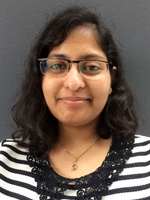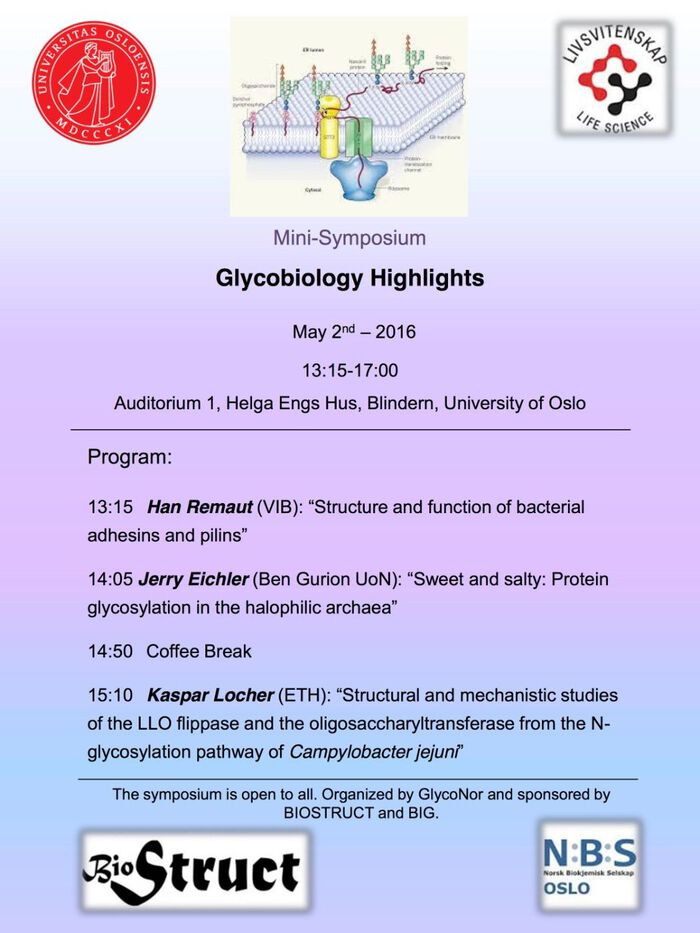Previous events - Page 229
Håvard Tveit Ihle, ITA
There is a growing interest in how the particle nature of dark matter (DM) can affect cosmological and astrophysical observables. Kinetic decoupling of DM from the heat bath in the early universe, e.g., leads to a pronounced cutoff in the matter power spectrum. Traditional WIMP models for DM (like SUSY) typically result in MeV-scale kinetic decoupling, corresponding to a cutoff at unobservably small scales. Here, we provide instead a classification of DM models that result in keV-scale kinetic decoupling. Such models result in a potentially observable cutoff in the power spectrum, at the scale of dwarf-galaxies and hence possibly addressing the missing satellite problem. The main focus of the talk will be on the decoupling process of DM in the early universe, implications for model building, and some examples from our work.
(The slides are now available)
Martin BUCHER, Directeur de Recherche, CNRS, Paris
This Friday the 13th of May we will discuss a recent paper by Chevin (2016): "Species selection and random drift in macroevolution".
Hope to see you there!
M.Sc. Saranya Subramani at School of Pharmacy will be defending the thesis Biochemical characterization and crystallization of the magnesium transporting P-type ATPase MgtA for the degree of Ph.D.
M.Sc. Saranya Subramani ved Farmasøytisk institutt vil forsvare sin avhandling for graden ph.d: Biochemical characterization and crystallization of the magnesium transporting P-type ATPase MgtA.
What makes us us? Why do we react and process things differently, and how do things we experience shape us? And have you heard about the epigenetic clock that can predict your age? How does it work, and how can the epigenetic clock be used to study neuropsychiatric disorders? Find out more about what happens to epigenetic marks in the initial stages of mouse development.
Robert Wagner, University of Stockholm
The past decade has seen a dramatic improvement in the quality of data available at high-energy gamma-rays. The all-sky LAT instrument on board of the Fermi satellite has revealed about 2,000 sources in the sky at the 100 MeV – 100 GeV band, and almost 200 sources have been detected at even higher energies, E>100 GeV, gamma rays energies by pointed, ground-based Imaging Air Cherenkov Telescopes.
These so-called very high-energy (VHE) gamma rays gamma rays cannot be produced in thermal processes, but are produced by interactions of high-energy particles. Gamma rays thus trace populations of such particles and enable the cosmic particle accelerators to be imaged and studied. Gamma-ray emitting particle accelerators are ubiquitous in the Galaxy and beyond; they include a variety of galactic and extragalactic objects. Details of the acceleration mechanisms as well as the role high-energy particles play in the evolution of star forming systems and galaxies remain to be fully understood. Gamma-rays can also be used as probes of the physics of the early universe, of fundamental physics, and could be products of dark matter annihilation in some cold dark matter realizations.
... (continued below)
(The slides will be available after the talk)
Late Lunch Talk by Hanna Nyborg Støstad, Natural History Museum (UiO)
The conference "Quantum groups: geometry, representations, and beyond" will take place on May 9-14, 2016.
Ainar Drews, PhD , ITA
Abstract: In a recent work with R. Conti (La Sapienza Univ., Rome), we have introduced a notion of positive definiteness for certain functions associated to a (unital, discrete) C*-dynamical system. We will sketch the proof of a Gelfand-Raikov type theorem for such functions and use it to construct complete positive maps on the full and the reduced C*-crossed products of the system. We will also explain how a natural definition of amenability for C*-dynamical systems emerges from our work.
Bjørn Solheim, FI
What do space and time look like on the very smallest scales ? Do space and time really exist, or are they just emergent concepts that serve as useful approximations in some physical domains? Following Einstein's insights we are lead to believe that the answers to questions about microscopic geometry lie in finding a microscopic theory of gravity. Loop quantum gravity (LQG) is a theory that encapsulates the core principles of quantum theory and general relativity (GR) with minimal extra assumptions. LQG can be seen both as a specific quantization of GR, and as a set of general methods for non-perturbative quantization of diffeomorphism invariant theories in a background independent manner. LQG leads to a well-defined theory of (spatial) quantum geometry, where geometric variables like area and volume take discrete values. LQG has been "successfully" applied to cosmology and black holes where it eliminates the singularities and gives a fully quantum version of these gravitational systems. The presentation will focus on the foundations of LQG with some applications in cosmology.
(The slides are now available)
Welcome to the GeoHyd Lunch Seminar on Wednesday May 4th @ 12:15 in aud. 2 in the Geology building.
In a recent session, discussion rose about reproductive value and fitness. In fact, there is much controversy concerning definitions, and while the definition of reproductive value is relatively straightforward, its interpretation, in particular as a fitness measure, is more confusing.
For this session, we want to look a bit more into that topic, starting off with Jacob Moorad's recent paper:
Lars Riber at the Department of Geosciences will be defending his dissertation: Petrographical and mineralogical changes in altered basement rocks on the Utsira High, North Sea – processes of regolith formation and comparison with analogous weathering sections
Abstract:
Marit Sandstad, Postodoctoral fellow NORDITA
This Friday the 29nd of April we will discuss a recent paper by our former CEES colleague Mark Grabowski : "Bigger brains led to bigger bodies?: The correlated evolution of human brain and body size". You can read some of the press cover about the article here.
Come discuss the evolution of our genus!
Doctoral candidate Lars Riber at the Department of Geosciences will give a trial lecture on the given topic: Atmosphere - biosphere changes through time: Evidence from weathering and paleosol formation
Upcoming short presentation from post docs in meteorology and oceanography:
Speaker: Hui Tang
Title: Teach CLM4.5 to simulate Arctic vegetation and its feedbacks: some hints from EGU Assembly 2016
This thursday, at the Speciation Journal Club, we will discuss a paper entitled "Ancient horizontal transfers of retrotransposons between birds and ancestors of human pathogenic nematodes"
by Suh et al. 2016 (Nature Communications)
”Sesongvariasjon av kalkflagellater i Oslofjorden
Sesongvariasjon av kalkflagellater på hver sin side av Drøbak-sundet, i lys av hydrografiske forhold og tid på året”




